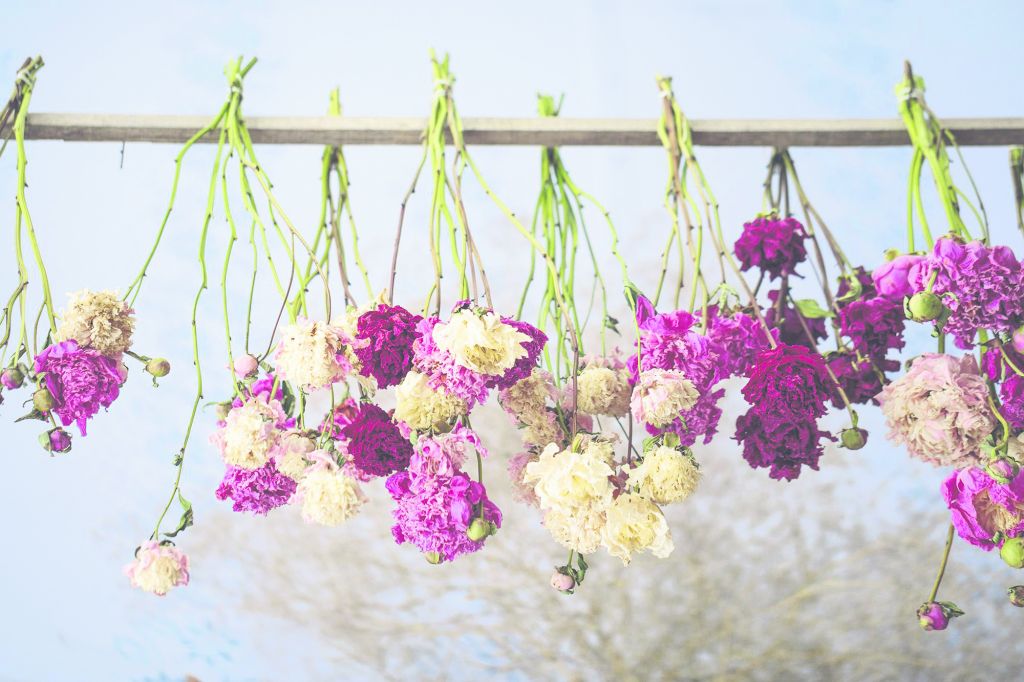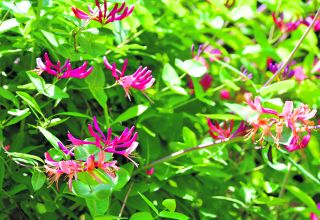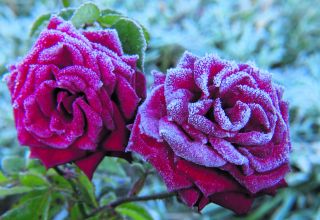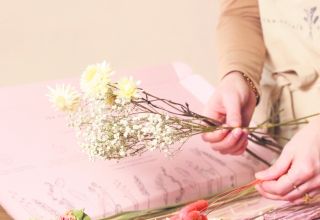
Dried flowers are in the middle of a resurgence in popularity, now seen as a more sustainable way to enjoy grown flowers within your home for many years rather than lasting a few days.
Forget the dusty, dried flower arrangements of the 1970s which always seemed to look messy and monotone.
We’ve entered a new era.
Dried flowers are back and in a big way.
And it doesn’t surprise me at all.
For a while now I’ve been hearing the whispers about the beauty of dried flowers, murmurs of the positives over their longevity versus fresh blooms amongst a few earnest voices (such as mine) telling others how they are so much more than the ones you might find in a dusty corner of your aunt’s house.
I have always persevered with dried flowers as I really believe that over the next couple of years, they are about to have their moment in the spotlight again. I have always loved dried flowers.
As a child I used to dry and press wildflowers and growing up I spent a lot of time on the South of France where flowers for drying are grown as crops and are always available in the markets.
I started experimenting with drying my own flowers when I found I had a glut of euphorbia that needed thinning out and I didn’t want to throw it in the compost. I like to watch how flowers change their appearance as they lose moisture and become something different to their original selves.
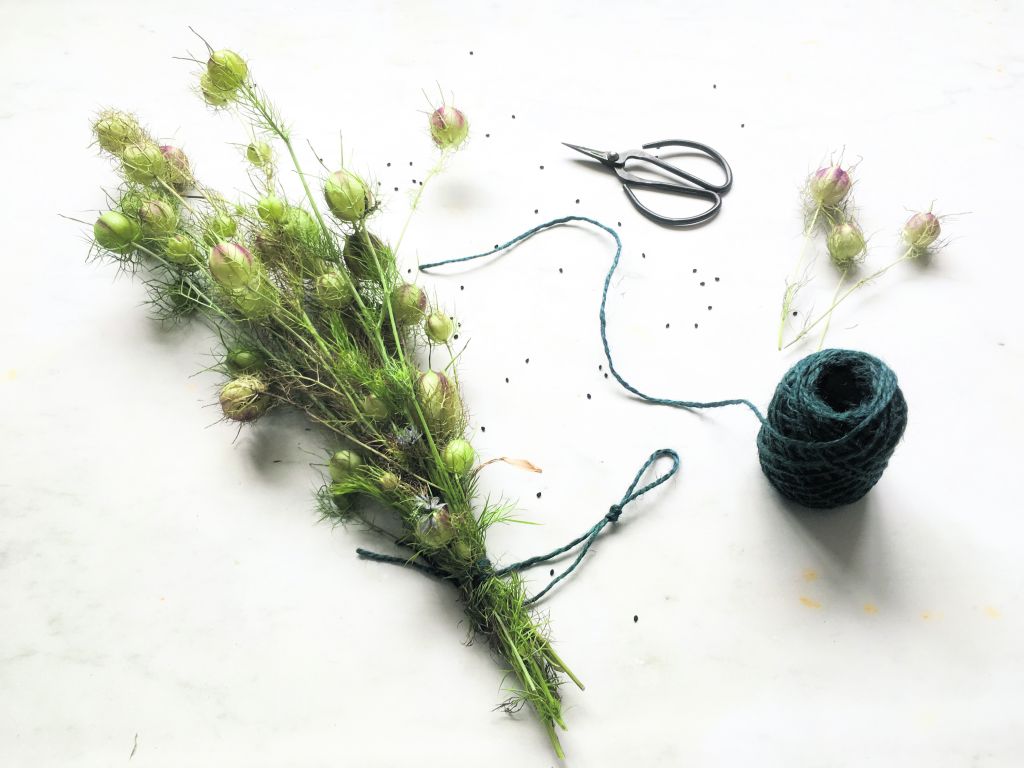
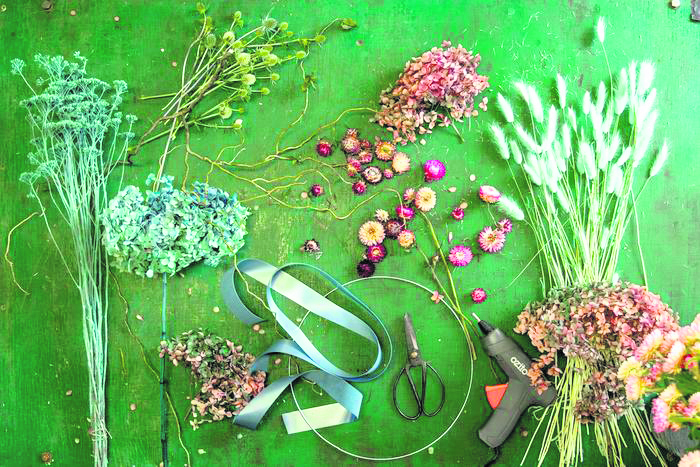
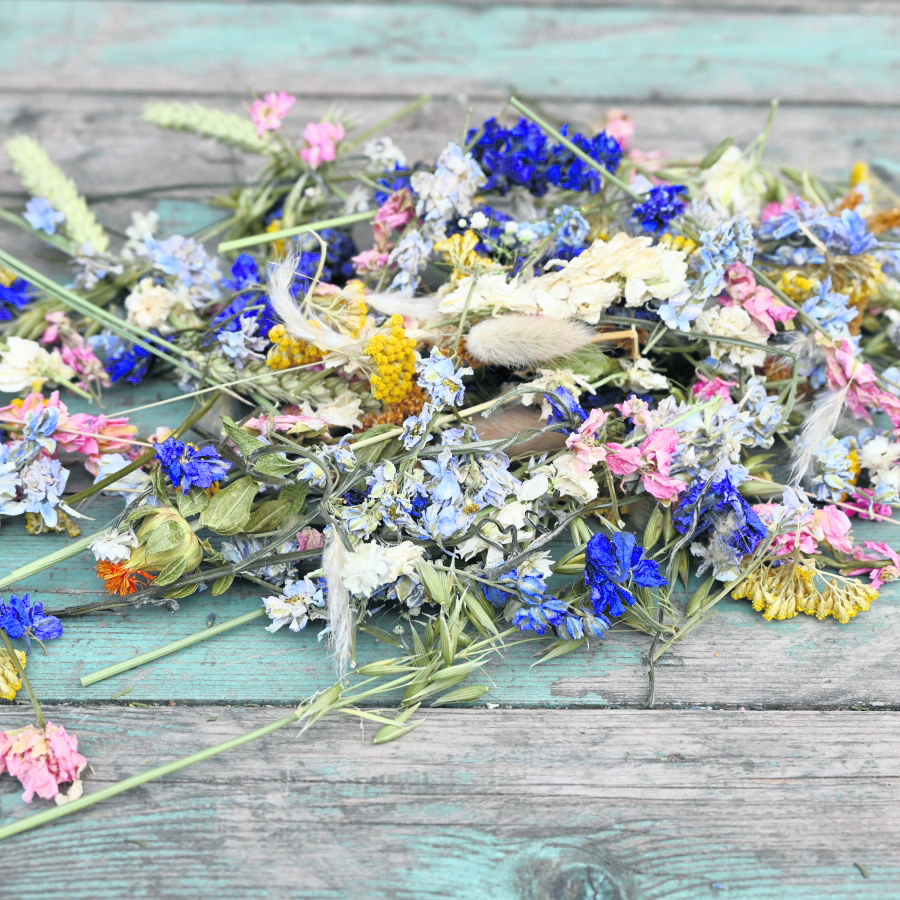
There is a hidden beauty to be found in dry or decaying plant material. They also provide a sustainable option for eco-friendly flower arranging and bridge the seasons when there is nothing to pick outside.
My main tip for a beginner is that drying flowers is easy- you can start with anything you can get your hands on. There is nothing complicated about it and is mostly a question of trial and error.
As a rule of thumb, thin wispy stems of flowers with small, delicate heads such as scabious, cornflowers, astrantia and crocosmia dry well quickly and tend to give great results- keeping their colour for a long period of time.
Single specimens in statement jars or vases, hand-tied bunches, or artistic woven willow hoops are the modern way of using dried flower heads. They’re understated and they come in parchment shades of silver, grey and brown so they slot into modern homes brilliantly well. You can also add touches of floral colour, should you wish.
Better still, you can gather material from your own garden, or a hedgerow, and arrange it once it’s become desiccated and dry. It’s very creative and you don’t need any specialist equipment – just a pair of snips and some imagination.
Choose a dry day to cut your material. The middle of the day is best, because that’s when the stems and heads are drier.
Flowers need to be picked just as they open, before any aging occurs. English lavender, Lavandula angustifolia, for instance, is traditionally cut during the first week of Wimbledon – at the end of June.
Roses and peonies need to be picked when the buds begin to swell.
The process of drying flowers can be achieved in two ways: you can place your flowers in a tray of silica gel and zap in the microwave, or hang flowers, grasses and seed heads high and let nature do the work.
One of the great things about dried flowers is that you can forage or grow your own: ‘There are so many easy to grow flowers which can be dried, such as Xerochrysum bracteatum (strawflowers), Anaphalis (small white flowers known as ‘pearly everlasting’), nigella (love in the mist) and umpteen grasses, so you can have the added satisfaction of a homegrown dried flower arrangement.
Roses, delphiniums, hydrangea, pansies and lavender also dry well, alongside thistle-like eryngium, colourful chrysanthemums and dainty gypsophila, aka baby’s breath.
Whether used as a floral arrangement or table decoration, keep the flowers dry, dust regularly, and avoid keeping them in direct sunlight to preserve the colour of the flower heads.
How long do dried flowers last?
If well cared for, dried flowers can last on average between three to four years. It is best to keep dried flowers out of direct sunlight and avoid humid conditions ‑ depending on their type and your home.
Why are dried flowers back in fashion?
Dried Flowers have taken over Instagram feeds and are getting even bigger at wedding, hotel interiors, events, home décor, etc by the minute. Dried and preserved flowers are about to overtake fresh flowers.
What is the dried flower colour trend for at the moment?
The desire for bright and bold shades is represented in the floral predictions for next year. Lush purples will be mixed to display bold and unique floral arrangements. The new trend towards vibrant colours and hues dominates the recent requests for pastel and more neutral shades.
Which flowers don’t dry well?
Dense fleshy flowers such as peonies and chrysanthemums or roses in full bloom are trickier to dry satisfactorily as the heads are too heavy to be supported by the stems – they become brittle and snap off. Also, flat daisy shaped flowers tend to close when they are suspended upside down and I find these easier for pressing.
Can you dry fresh cut flowers from a bouquet or bought from a shop?
I often remove my favourite blooms from gift bouquets if I want to keep them longer than they would last in a jar. Shop bought flowers need to be at their freshest as they won’t dry properly if they have started to go over.
Here’s just some thoughts on my favourite flowers to dry
English lavender – Lavandula angustifolia
This summer-flowering lavender is often used for low hedges, or planted at the front of borders. The heads are roughly an inch or so long the first week or second of Wimbledon is the ideal time to cut them, while they’re pristine. ‘Munstead’ is mauve-blue, ‘Hidcote’ is a darker purple-blue and ‘Melissa Lilac’ a paler mauve. Hang up the bunches to dry.
Achillea
Achillea, or yarrow, is a stiff-stemmed perennial that dries easily. Simply stand the stems in a vase or bucket. Any achillea should dry well and their flat heads provide a contrast among delicate dried seed heads and flowers.
Sealavender – Limonium platyphyllum
The tiny flowers form thunderclouds and they are held on long stems, so they may droop.
Greater sea kale – Crambe cordifolia
This giant member of the cabbage family produces stems of tiny white flowers at eye height, like a leggy but equally dainty gypsophila. As they fade green bobbles appear.
Globeartichoke – Cynara cardunculus
Tall and statuesque, reaching man-height, this sun lover can be picked as the flowers open, or left to form a seed head. It will dry hung upside down. Give this a sheltered sunny site, but it’s easy to raise from seed should it disappear after a hard winter. It needs space and supports.
Seaholly – Eryngium
Perennial sea hollies have blue flowers and blue stems when grown in sunny positions. The heads dry well, picked when they first fully open. You have two bites of cherry with the biennial sea holly, Eryngium giganteum. This architectural, stainless steel eryngium with jagged ruffs set round large, oval thimbles.
Step by step to drying your own flowers
- Choose flowers which have only just bloomed, ideally opening that morning. If using a bouquet of already-cut flowers, remove them from the water just as they are starting to look their best.
- Remove excess foliage under the flower head and trim the stems.
- Split the flowers into small bunches of six or seven stems. If you’re drying larger flowers such as roses or hydrangeas, dry them individually.
- Tie each bunch with an elastic band, twine or string and hang them upside down. You could use a coat hanger or another hook to secure in place.
- Place in a dry, dark room away from direct sunlight to help preserve the colours. An under-stairs or airing cupboard is ideal. Avoid extremes of temperature as this will encourage petals to drop.
- Leave the flowers for two to three weeks until they are completely dry. They’re ready when they feel light and brittle to touch.
- When you’re ready to arrange them, give them a quick spritz of hairspray – this gives protection and a nice shine to the blooms.
